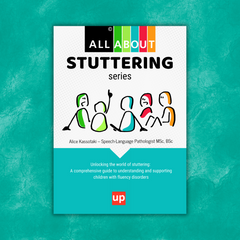Introduction
Imagine a child who can read fluently at a remarkably young age but struggles with language and social communication. This intriguing phenomenon is known as hyperlexia, a condition that has captivated researchers, parents, and educators alike. In this blog post, we will delve into the intricacies of hyperlexia, exploring its characteristics, causes, and strategies for supporting children with this unique profile.

What is Hyperlexia?
Hyperlexia is characterized by an exceptional ability to read well beyond the expected level for a child's age, often demonstrated before the age of five. While it may resemble precocious reading skills, hyperlexia is distinct in its associated challenges in language and social communication. Diagnostic criteria include early and intense fascination with letters, numbers, and written material, alongside difficulties in understanding and using spoken language.
When Hyperlexia was recognized
Hyperlexia as a distinct phenomenon was first recognized and described in the field of developmental psychology in the early 1970s. It was Dr. Norman E. Silberberg, a child psychiatrist, who coined the term "hyperlexia" in 1967 to describe children with exceptional reading abilities but with difficulties in language and social communication.
However, it was not until 1973 that Dr. Silberberg published a seminal paper titled "Hyperlexia: Specific Word Recognition Skills in Young Children" in the Journal of Pediatrics, bringing attention to this unique profile. His research and observations shed light on the fascinating world of hyperlexia and paved the way for further investigation into this phenomenon. Since then, researchers, educators, and clinicians have continued to explore hyperlexia, contributing to our understanding of its characteristics, causes, and appropriate interventions for children with this remarkable reading profile.
Characteristics of Hyperlexia

Children with hyperlexia showcase several key characteristics:
- Advanced reading skills: They demonstrate impressive reading abilities, decoding words and comprehending texts well beyond their peers.
- Language and social communication challenges: Difficulties in expressive and receptive language, pragmatic skills, and social interaction are common.
- Echolalia and scripting: Children with hyperlexia often repeat words, phrases, or whole conversations they have heard, relying on scripts to communicate.
- Sensory sensitivities and repetitive behaviors: They may exhibit hypersensitivity or hyposensitivity to sensory stimuli, coupled with repetitive actions or fixations.
- Cognitive strengths and weaknesses: While hyperlexic children excel in reading and rote memory tasks, they may struggle with abstract language comprehension and flexible thinking.
Causes and Associated Conditions
The origins of hyperlexia are believed to be neurodevelopmental, although the precise causes remain unclear. Hyperlexia is often observed alongside other conditions, most notably autism spectrum disorder (ASD). It is estimated that up to 5% of individuals with ASD exhibit hyperlexic traits. Additionally, hyperlexic children may have comorbidities such as attention-deficit/hyperactivity disorder (ADHD) or sensory processing difficulties. Genetic and environmental factors are thought to contribute to the development of hyperlexia, although research is ongoing to unravel these complex connections.

Diagnosing Hyperlexia
Accurate diagnosis is crucial for understanding and addressing the specific needs of children with hyperlexia. The process involves comprehensive assessment and evaluation by professionals, including speech-language pathologists, psychologists, and developmental pediatricians. Collaboration between parents, educators, and healthcare providers is essential in recognizing the distinctive patterns and differentiating hyperlexia from other language and reading-related disorders. However, diagnosing hyperlexia can present challenges due to its overlap with other conditions and the limited awareness among professionals.
Strategies for Supporting Children with Hyperlexia
Creating a supportive environment is paramount to helping children with hyperlexia thrive. Here are some strategies for effectively supporting them:
-
Establish a structured and predictable routine, which provides a sense of security and reduces anxiety.
-
Utilize visual supports, such as visual schedules, to enhance comprehension and communication.
-
Tailor educational approaches to meet individual needs, focusing on their strengths while addressing challenges.
-
Promote social skills development through explicit instruction, social stories, and social interaction opportunities.
-
Collaborate with therapists and specialists, including speech-language pathologists, occupational therapists, and behavioral therapists, to address specific needs and foster growth.
Success Stories: Real-Life Experiences
The journey of children with hyperlexia is filled with inspiring stories of growth and achievement. Parents and educators have shared remarkable experiences of how tailored interventions, individualized education plans, and supportive communities have empowered these children to reach significant milestones. By celebrating these success stories, we can encourage others to embrace a strengths-based approach and nurture the potential of children with hyperlexia.Promoting Awareness and Acceptance
Raising awareness and fostering acceptance of hyperlexia are crucial steps in ensuring inclusive education and support systems. By educating the community about hyperlexia, we can break stereotypes and misconceptions. Building a supportive network of parents, educators, and professionals can create a safe and understanding environment for children with hyperlexia to thrive.Conclusion
Hyperlexia provides us with a glimpse into the fascinating world of early reading and the complexities of neurodevelopment. Understanding hyperlexia's characteristics, causes, and appropriate support strategies is essential for empowering children with this unique profile. By embracing their strengths, addressing challenges, and promoting acceptance, we can unlock the tremendous potential of children with hyperlexia and pave the way for their success.
References:
-
Clarke, M. T. (2018). Hyperlexia: The flip side of autism? Journal of the Australian Association of Special Education, 42(1), 85-99.
-
Grigorenko, E. L. (2017). Hyperlexia: Decoding the enigma. Frontiers in Psychology, 8, 1327.
-
Neuhaus, E., & Paul, R. (2020). Hyperlexia in children with autism spectrum disorder. Journal of Autism and Developmental Disorders, 50(5), 1702-1717.
-
Semel, E., Wiig, E., & Secord, W. (2003). Clinical Evaluation of Language Fundamentals - Fourth Edition (CELF-4). The Psychological Corporation.
-
Tager-Flusberg, H., & Rogers, S. (2001). Developing a research agenda for studying nonverbal communication in autism. Journal of Autism and Developmental Disorders, 31(1), 3-11.

Original content from the Upbility writing team. Reproduction of this article, in whole or in part, without attribution to the publisher is prohibited.










